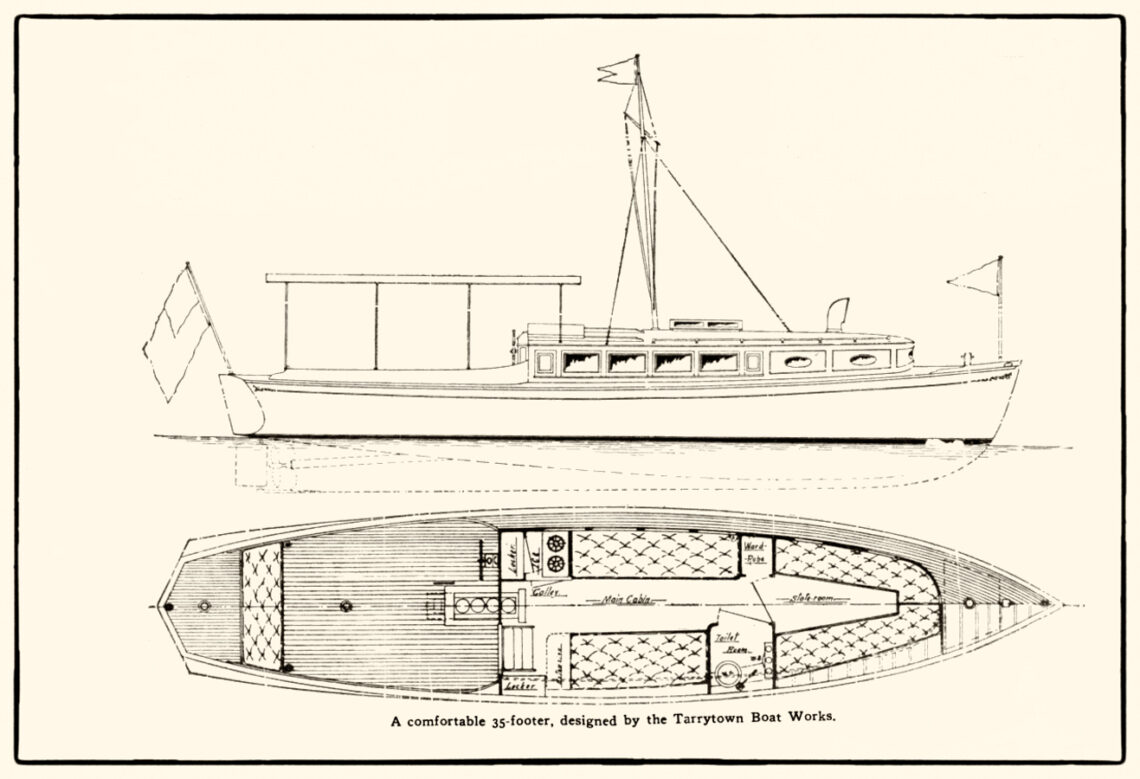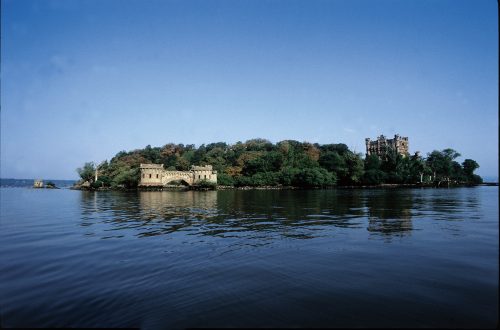Vanished Sleepy Hollow

We love combing through yellowed pages and weathered maps of archival records, each brittle document telling a story of a bygone era. For our series on Vanished Sleepy Hollow we dig deep into archives to piece together the puzzle of Sleepy Hollow's past, uncovering the foundations of forgotten structures and the footprints of industries long vanished.
The ghosts of these old places haunt us through the names of our streets and neighborhoods, hiding in plain sight. These references are the headstones of lost places—Castle Heights where Ericstan once commanded the best view of the Hudson, Josephine Street where the Holt-Lyon Company's steam-powered egg beaters once whirred, Broadway where bobsledders once thundered downhill at 60 miles per hour. Some disappeared in spectacular fashion—castles demolished, hotels razed, bridges washed away. Others simply faded: mills fell silent, boat works closed their doors, bakeries shuttered their ovens.
What remains are fragments: a postcard of the Florence Inn with early automobiles parked out front, a bobsled hanging forgotten in a barn, the devilish footprints pressed into stone, a handful of photographs of gothic towers that once pierced the Tarrytown sky. Through these remnants we reconstruct what was—not out of nostalgia for a vanished golden age, but because these lost places shaped the landscape we inhabit today. They're the bones beneath the skin of Sleepy Hollow Country, and understanding them helps us understand ourselves.
-
A Slice of Tarrytown Bakery History
Before the rise of supermarkets in the 1950s and 1960s, Main Streets across America looked very different than they do today. Small bakeries and other specialized food stores were much more common than now. Many also delivered to homes. While records are sparse, we’ve compiled a short compendium of historic Tarrytown bakeries. Today as we witness a resurgence of fresh, locally produced food, bakeries in particular have flourished. Find contemporary Tarrytown and Sleepy Hollow bakeries at VisitSleepyHollow.com. Breitenbach’s Bakery John C. Breitenbach founded his eponymous bakery in New York City in the 1880s. It grew into a substantial operation with four retail stores and a wholesale business supplying goods to…
-
The Devil’s Footprints
Sleepy Hollow Country is steeped in folklore, but few tales are as peculiar as the story of the devil’s footprints in the village of Croton-on-Hudson. We stumbled across this geological phenomenon while sifting through newspaper archives for information on the Black Horse Tavern, a notorious Revolutionary War era public house on the bank of the Croton River. Below the headline “The Devil’s Footprints” ran the lede “Mysterious footprints in the solid rock on the east and west banks of the Hudson at Croton have puzzled the scientists, who believe them to have been made by a primeval man before the Stone Age.” We thought we had a pretty good handle…
-
Tarrytown Boat Works
Tarrytown Boat Works was part of a vibrant Hudson River working waterfront during the early years of the 20th century. It was one of at least three boat builders on the Tarrytown waterfront over the years, including local powerhouses John O. Brown and Julius Petersen. While traces of any local boat builders are hard to find 100 years later, we dug deep into the archives to piece together this brief history of Tarrytown Boat Works. Sadly, we have not been able to track down any surviving watercraft from this shop. What we know for sure is that the business was incorporated in 1910. The annual report from the New York…
-
Ericstan: The Lost Castle of Tarrytown
Once upon a time, in Sleepy Hollow Country, there were not one, but four impressive stone “castles” in the region. Two of these are still in the landscape today: Carrollcliff and Lyndhurst. The remaining two are no longer standing and lost to time. One had featured prominently, overlooking the village of Tarrytown, with towers and wisteria-covered walls that commanded one of the best views of the Hudson River. This lost castle was Ericstan. Architect Alexander Jackson Davis was busy designing and building residences in the Sleepy Hollow region in the early 19th century. He was an artistic acquaintance of George Harvey, the artist who designed Sunnyside for Washington Irving, and…
-
The Legendary Headless Horseman Bridge
“The bridge became more than ever an object of superstitious awe, and that may be the reason why the road has been altered of late years, so as to approach the church by the border of the mill-pond.” -“The Legend of Sleepy Hollow”, Washington Irving More than 200 years after publication of “The Legend of Sleepy Hollow“, the headless horseman bridge is one of the most popular destinations in Sleepy Hollow. Every October it is sought out by thousands of visitors from around the globe. Unfortunately, the original bridge where Ichabod Crane lost his race with the Headless Horseman no longer exists. The simple wooden span that crossed the Pocantico River…
-
Speed, Glory, and Tragedy: Sleepy Hollow’s Lost Bobsled Champions
While the origins of bobsledding are often contested between the Swiss Alps and upstate New York’s Adirondack mountains, compelling evidence points to the Hudson Valley as the sport’s birthplace. In Albany’s bustling lumber district along the Hudson River, rough-hewn lumberjacks transformed working sleds into racing machines during the 1880s. Newspaper reports confirm Albany held organized bobsled races at its winter carnival as early as 1885, predating Swiss competitions by two years. An 1882 exam for Albany eighth-graders even asked students to write about bobsledding, suggesting the sport was already part of local culture. The sport’s innovation was elegantly simple: some daredevil, understanding that more weight equaled more speed, linked two…
-
Ghoulish Jokester Robs a Grave
“Echoes of Ichabod Crane’s ghost stories in the Tarrytown cemetery led to the discovery early today that some one had removed a skull from a pauper grave and placed it on top of a tombstone in the conventionally gruesome manner.” -The Washington Times, May 25, 1929 One night in May 1929 a person passing through the hamlet of East View received quite a jolt at the sight of a human skull atop a tombstone in the county poorhouse cemetery. Not bothering to give his name, the individual reported to Town of Greenburgh police that a ghost was roaming the cemetery. Sergeant Dunkel investigated and found the skull placed on top…
-
Holt-Lyon Company
Over the course of its existence, the Holt-Lyon Company manufactured a variety of hand-powered kitchen appliances like cream whips and egg beaters, bread slicers, and mayonnaise mixers. Holt-Lyon was incorporated around the year 1900 for capital of $20,000 (about $700,000 in 2023 dollars). The business was the joining of forces by Nelson Lyon, who had manufactured egg beaters near Albany, New York, with Thomas Holt, who held patents for improved egg beater designs. The partners leased a factory on Josephine Street on the Tarrytown, New York waterfront for their steam-powered equipment. Hand-powered egg beaters and similar hand-held mixers first appeared in US patents filed in the 1850s. Their innovative utility…
-
The Florence Inn
From 1819 to 1964 the northwest corner of the intersection of South Broadway (Route 9) and Franklin Street was occupied by a rambling old house that for much of its existence was a popular inn. Known first as the Franklin House and later as the Vincent House, Florence Inn, and Hotel Florence, it served locals and travelers along the Albany Post Road. Notable Guests of the Florence Inn In their History of the Tarrytowns, local historians Jeff Canning and Wally Buxton record a parade of notable visitors to the Florence: President Martin Van Buren often stopped while in transit from his home in upstate Kinderhook, NY to Washington, DC; Woodrow Wilson…
-
Carl’s Mill
“His greatest treasure of historic lore, however, was discovered in an old goblin-looking mill, situated among rocks and water-falls, with clanking wheels, and rushing streams, and all kinds of uncouth noises. A horse-shoe, nailed to the door to keep off witches and evil spirits, showed that this mill was subject to the awful visitations. As we approached it, an old negro thrust his head, all dabbled with flour, out of a hole above the water-wheel, and grinned, and rolled his eyes and looked like the very hobgoblin of the place. The illustrious Diedrich fixed upon him, at once, as the very one to give him that invaluable kind of information,…































